Similar Isdal Woman, Princess Doe, Peter Bergmann Case | ||
L inconnue de la seine soft spoken whispering brushing asmr
L'Inconnue de la Seine (English: The Unknown Woman of the Seine) was an unidentified young woman whose putative death mask became a popular fixture on the walls of artists' homes after 1900. Her visage inspired numerous literary works. In the United States, the mask is also known as "La Belle Italienne".
Contents
- L inconnue de la seine soft spoken whispering brushing asmr
- L inconnue de la seine
- History
- English literature
- German literature
- American literature
- French literature
- Ballet
- Film
- CPR doll
- References

L inconnue de la seine
History
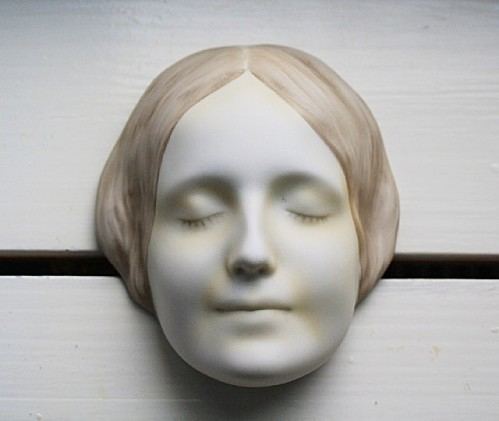
According to an often-repeated story, the body of the young woman was pulled out of the Seine River at the Quai du Louvre in Paris around the late 1880s. Since the body showed no signs of violence, suicide was suspected.
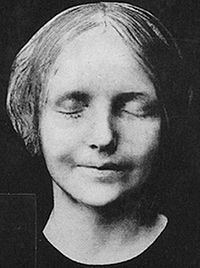
A pathologist at the Paris Morgue was, according to the story, so taken by her beauty that he had to make a wax plaster cast death mask of her face. It has been questioned whether the expression of the face could belong to a drowned person. According to other accounts, the mask was taken from the daughter of a mask manufacturer in Germany. The identity of the girl was never discovered. Claire Forestier estimated the age of the model at no more than 16, given the firmness of the skin.
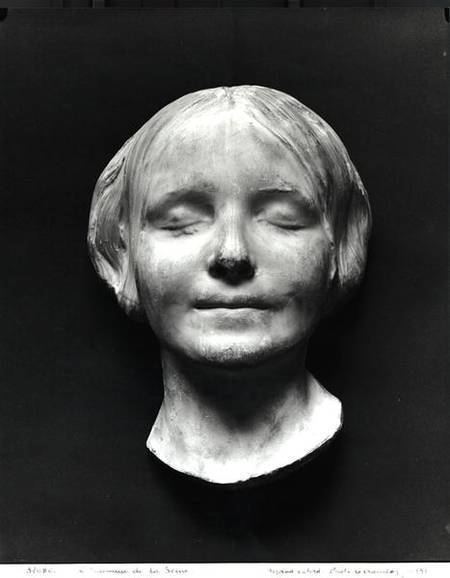
In the following years, numerous copies were produced. The copies quickly became a fashionable morbid fixture in Parisian Bohemian society. Albert Camus and others compared her enigmatic smile to that of the Mona Lisa, inviting numerous speculations as to what clues the eerily happy expression in her face could offer about her life, her death, and her place in society.
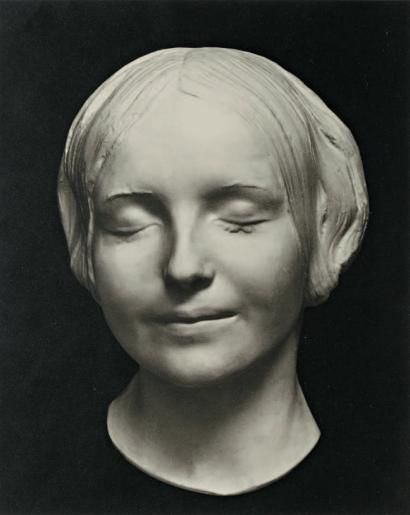
The popularity of the figure is also of interest to the history of artistic media, relating to its widespread reproduction. The original cast had been photographed, and new casts were created from the film negatives. These new casts displayed details that are usually lost in bodies taken from the water, but the apparent preservation of these details in the visage of the cast seemed to only reinforce its authenticity.

Critic Al Alvarez wrote in his book on suicide, The Savage God: "I am told that a whole generation of German girls modeled their looks on her." According to Hans Hesse of the University of Sussex, Alvarez reports, "the Inconnue became the erotic ideal of the period, as Bardot was for the 1950s. He thinks that German actresses like Elisabeth Bergner modeled themselves on her. She was finally displaced as a paradigm by Greta Garbo."
English literature
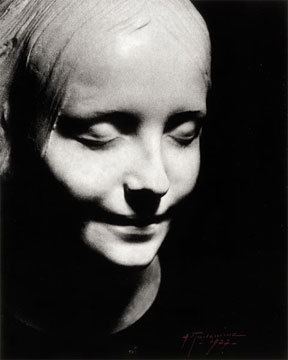
The earliest mention can be found in Richard Le Gallienne's 1900 novella The Worshipper of the Image, in which an English poet falls in love with the mask, eventually leading to the death of his daughter and the suicide of his wife.

An image of L'Inconnue has been used on the cover illustration for the family history mystery novel A Habit Of Dying by D. J. Wiseman.
German literature
The protagonist of Rainer Maria Rilke's only novel, Die Aufzeichnungen des Malte Laurids Brigge (1910), reflects:
"The caster I visit every day has two masks hanging next to his door. The face of the young one who drowned, which someone copied in the morgue because it was beautiful, because it was still smiling, because its smile was so deceptive – as though it knew.""Der Mouleur, an dem ich jeden Tag vorüberkomme, hat zwei Masken neben seiner Tür ausgehängt. Das Gesicht der jungen Ertränkten, das man in der Morgue abnahm, weil es schön war, weil es lächelte, weil es so täuschend lächelte, als es wüßte."In 1926 Ernst Benkard published Das letzte Antlitz, a book about 126 death masks, writing about our subject that she is "like a delicate butterfly to us, who, carefree and exhilarated, fluttered right into the lamp of life, scorching her fine wings." ("uns jedoch ein zarter Schmetterling, der, sorglos beschwingt, an der Leuchte des Lebens seine feinen Flügel vor der Zeit verflattert und versengt hat.")
Reinhold Conrad Muschler's 1934 widely translated best-selling novel Die Unbekannte tells the maudlin story of the fate of the provincial orphan Madeleine Lavin, who has fallen in love with the British diplomat Lord Thomas Vernon Bentick and, after a romance, commits suicide in the Seine when Bentick returns to his fiancée. This novel was turned into a film of the same name in 1936.
A male pathologist was said to have recorded the face of an unidentified young woman who, around the age of sixteen, according to his story, had been found drowned in the Seine River at Paris, France around the late 1880s. The man at the Paris Morgue was so taken by her beauty that he worked for hours to make a plaster cast of her face. She was considered so beautiful that the worker said; "Her beauty was breathtaking, and showed few signs of distress at the time of passing. So bewitching that I knew beauty as such must be preserved." The cast was also known as "Bewitching Woman", a nickname that never caught on. The cast was also compared to the Mona Lisa, and other famous paintings and sculptures so much that, in the following years, copies of the mask became fashionable figures in Parisian Bohemian society. Other accounts state that the cast was taken from a young German mistress (also said to be the man's natural-born daughter) who bore the child of a mask-maker who sold the cast and then committed suicide (in the Seine River) when her baby was stillborn.
Other examples appear in:
Russian literature
Vladimir Nabokov's 1934 poem L'Inconnue de la Seine, written in Russian, was published in Poslednie Novosti in 1934. It has been argued that this poem has as much to do with the Slavic myth of rusalka as with the mask itself.
American literature
L'Inconnue is referenced in William Gaddis' 1955 novel The Recognitions.
Caitlín R. Kiernan writes about L'Inconnue as the model of Resusci Anne in her novel The Drowning Girl (2012). The story is deeply tied to the themes and images of the book.
Referenced as the origin of the CPR doll by Chuck Palahniuk in "Exodus", a story in Haunted.
French literature
Maurice Blanchot, who owned one of the masks, described her as "une adolescente aux yeux clos, mais vivante par un sourire si délié, si fortuné, [...] qu'on eût pu croire qu'elle s'était noyée dans un instant d'extrême bonheur" ("a young girl with closed eyes, enlivened by a smile so relaxed and at ease... that one could have believed that she drowned in an instant of extreme happiness")
In Louis Aragon's 1944 novel Aurélien, L'Inconnue played a significant role as one of the main characters attempts to rejuvenate the mask from various photographs. At the beginning of the 1960s Man Ray contributed photographs to a new edition of the work.
In 2012, Didier Blonde wrote a novel called L'inconnue de la Seine, about a man in Paris who stumbles upon a copy of the mask in an antiques store, and who tries to find out more about the girl it was modelled after. The book was published by Gallimard (Blanche).
Ballet
In 1963, Bentley Stone choreographed a version of L'inconnue to music by Francis Poulenc for the Stone-Camryn Ballet. It premiered with a cast that included Ruth Ann Koesun and John Kriza. That ballet was moved to the American Ballet Theatre in 1965 with Koesun and Kriza reprising their roles, and with Christine Sarry taking the role of the "River Girl."
Film
Director Agnès Varda talks about L'Innconnue in her 1988 documentary Jane B. par Agnès V. where she compares Jane Birkin's desire to be famous but anonymous as the state of L'Innconnue.
CPR doll
The face of the unknown woman was used for the head of the first aid mannequin Resusci Anne. It was created by Peter Safar and Asmund Laerdal in 1958 and was used starting in 1960 in numerous CPR courses. Therefore, the face has been called by some "the most kissed face" of all time.
